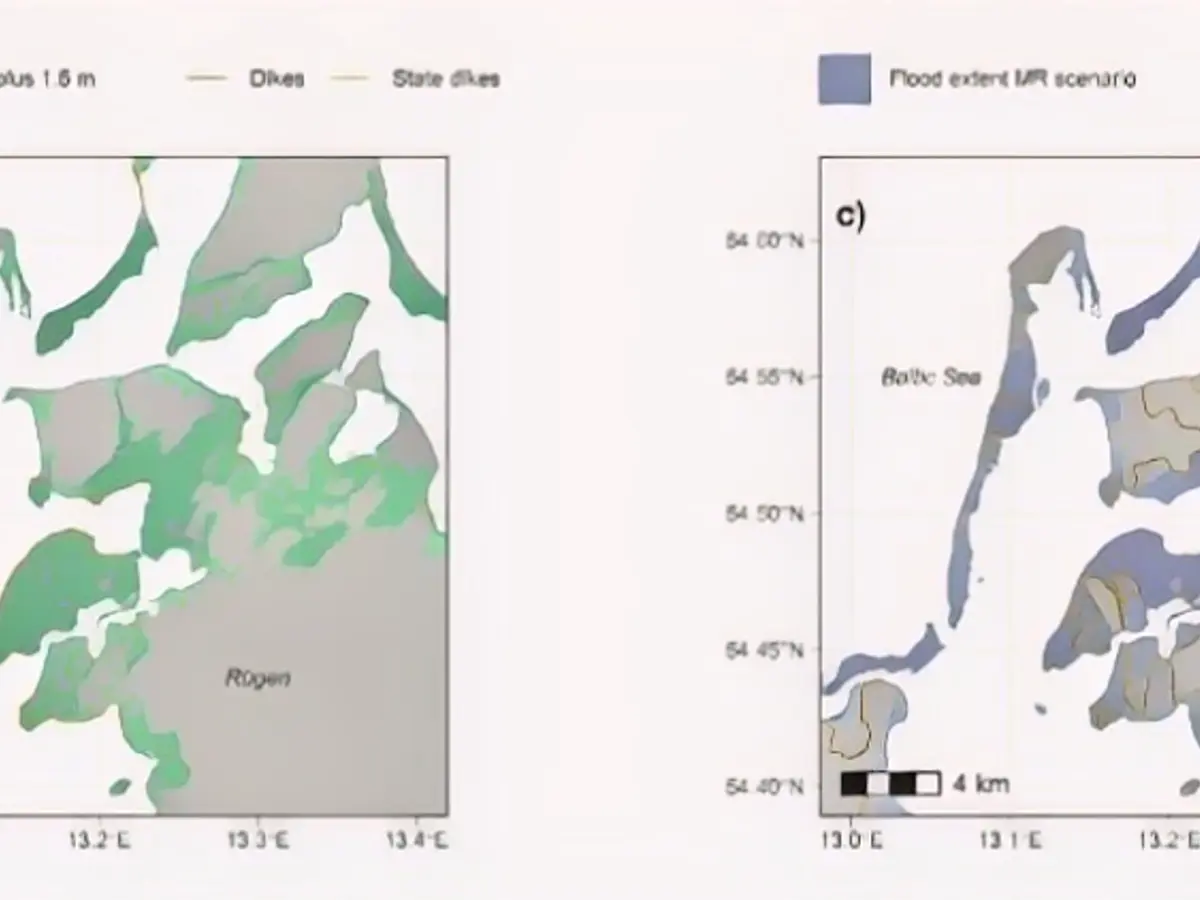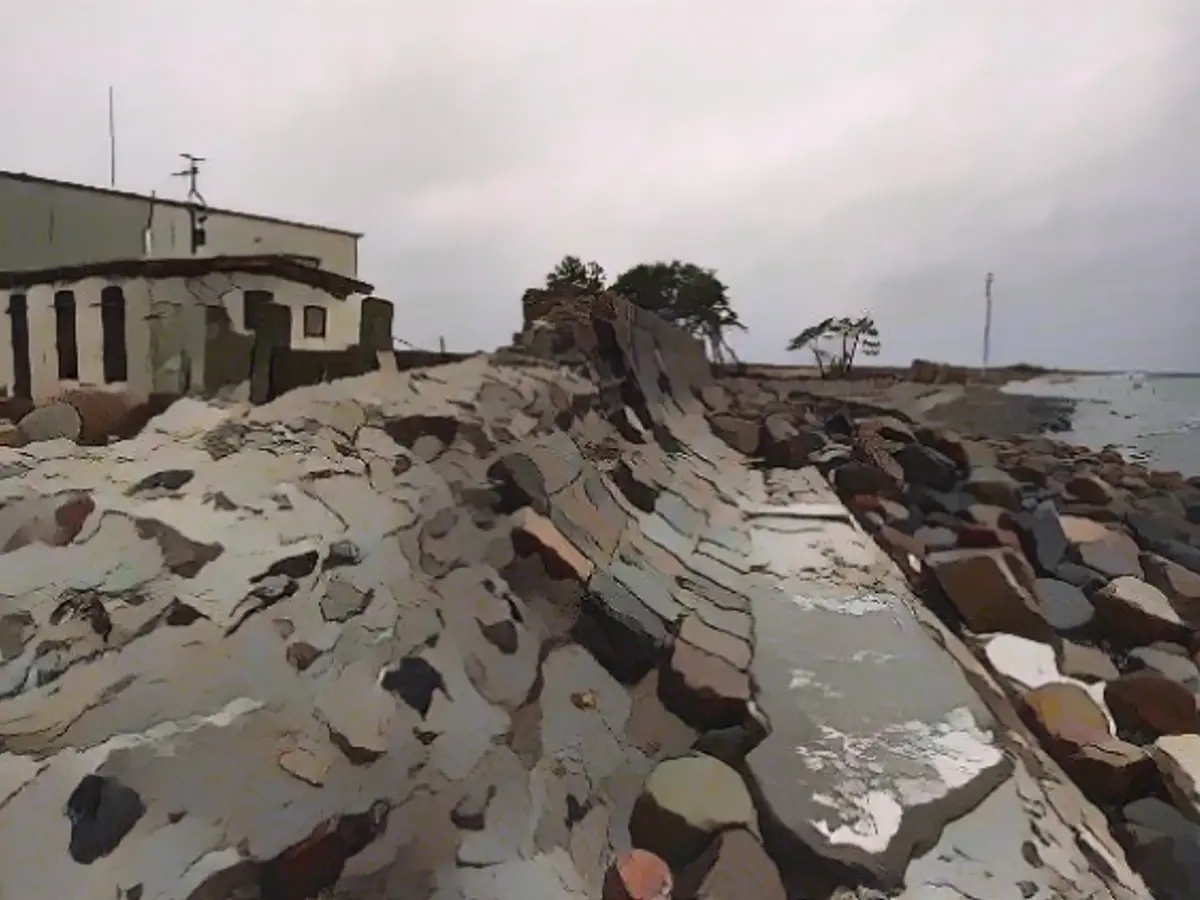Baltic Sea coast could become a disaster hotspot
Rising sea levels and ever stronger storms: climate change is threatening the German Baltic coast. Without early protective measures, tens of thousands of people in the region could be affected by flooding in the future, say researchers.
Broken dykes, destroyed houses, sunken boats: a record storm surge hits the German Baltic coast at the end of October and causes catastrophic damage. In view of the accelerating pace of climate change, such extreme storms could become increasingly frequent in the future. Fatal prospects for the region. After all, the particularly sharp rise in water levels and low-lying land areas make Germany's Baltic Sea regions particularly susceptible to devastating floods. Joshua Kiesel from Kiel University and his team have investigated the extent to which coastal protection protects against future storm surges and which measures are most effective.

For their study, which was published in the journal "Nature Communications Earth & Environment", they recreated the German coastal topography, including existing dykes, in a high-resolution simulation. The team then virtually exposed the coast to a 200-year storm surge with a sea level rise of one or one and a half meters - this corresponds to the predictions of the latest World Climate Report for largely unabated climate change by 2100.
The researchers also simulated two different scenarios for improved coastal protection: firstly, raising the dykes by 1.50 meters, and secondly, moving the dykes back. In this case, the old dykes are breached and the land behind them is designated as a buffer area in the event of flooding.
Worst case: 1000 square kilometers flooded
The result: under current conditions, a flood of the century would inundate around 217 square kilometers of land. With a sea level rise of one meter, almost four times as much land would be flooded. With a one and a half meter rise in sea level, more than 1000 square kilometers of land would be affected by flooding.
"The majority of our simulated flooding areas are located in Mecklenburg-Western Pomerania, with the hotspots in the bays of Fischland-Darß-Zingst, Rügen, Usedom and the Peene estuary," report Kiesel and his team. "In Schleswig-Holstein, the Flensburg Fjord, Eckernförde Bay, Fehmarn, Travemünde and Lübeck are particularly affected."
Even raising the dykes by 1.5 meters would hardly provide any additional protection. According to simulations, up to 63,000 people would be affected by the flooding without such increases. With adjustments, it would still be up to 50,000 people. According to the study, relocating the dykes combined with raising the land protection dykes would offer slightly better protection: A once-in-a-century flood with a higher sea level would then affect 26 percent fewer people than without adaptation. However, the flooded area would remain almost the same.
Gaps in the dyke line
"We were able to assess the effectiveness of existing and raised dykes on the one hand and of relocated dykes on the other," writes Kiesel in the press release. But: "Neither will probably be sufficient to withstand the ongoing sea level rise." The risk of flooding due to storms and sea level rise will continue to increase significantly without further adjustments.
The reason for the relatively low impact of coastal protection measures: "The flooding maps show that the water does not wash over the dykes, but bypasses them or floods low-lying areas that are not currently protected by dykes," says Kiesel. He therefore calls for more research into the effectiveness of alternative sea level adaptation concepts. After all, there is also the threat of storm surges in quick succession in the future. "Infrastructure that has already been weakened by the first storm surge would be much more vulnerable to subsequent events, with even worse consequences for people on the coast."
Read also:
- Despite educational efforts to raise awareness about climate change, the Baltic Sea coast remains vulnerable to natural disasters like floods and storm surges due to sea level rise.
- The Baltic Sea, currently threatened by sea level rise and stronger storms due to climate change, could significantly impact the lives of over 50,000 people in the future without adequate coastal protection measures in regions like Mecklenburg-Western Pomerania and Schleswig-Holstein.
- While raising dykes or relocating them can offer some protection against floods, especially in the event of a once-in-a-century flood with a higher sea level, they may not be sufficient to withstand the ongoing sea level rise, emphasizing the need for alternative sea level adaptation concepts and improved infrastructure preparedness.
Source: www.ntv.de







